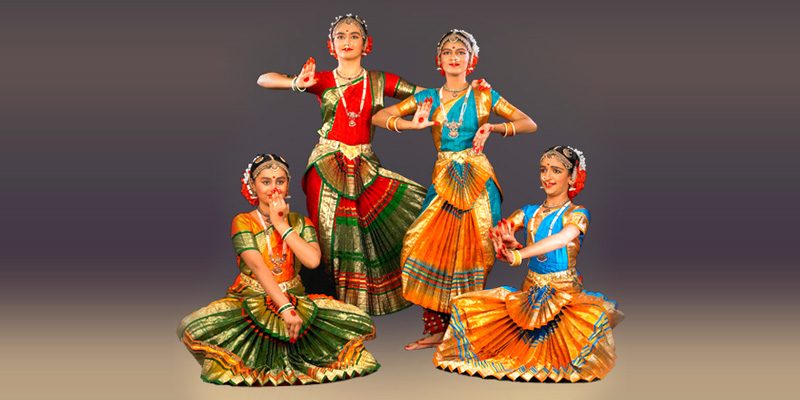
The Melattur style of Bharatanatyam dance was developed largely out of the devadasi traditions and Melattur Bhagavata Mela by Mangudi Dorairaja Iyer (1900–1980) a sanyasi following Srividya Upasana. It is only the deities or the great rishis who were deemed worthy of such aggrandizement, the repertoire of a Melattur style dancer consists mostly of the ancient items performed in the temples. The dancer is expected to use the salangai (ankle bells) in a more knowledgeable that produces a richer variety of sounds and highlights the rhythm. Another distinctive feature is the presence of pancha nadais and extensive use of gati bhedas. For instance in varnam there would be gati bhedam in every jati. There is a special emphasis on crisp adavus, fluid variations or patterned korvais.
Due to the Melattur Bhagavata Mela influence, the style makes extensive use of the dramatic elements, i.e. characterisation, which requires highly expressive and intricate abhinaya. Unlike other Bharatham styles, the facial expressions in of the Melattur style dancer are not rigidly defined, are neither theatrical nor understated, which requires a high degree of analysis and individual extemporization. Because of the devadasi influence there is an emphasis on sringara rasa, rather than on a neutral bhakti. The nritta abhinaya is different from most other styles in the sense that each body movement is to be reflected in a different facial expression in a spontaneous manner. Developed from the devadasi style, Melattur Bhagavata Mela by Mangudi Dorairaja Iyer this style nourished. Shringara and Bhakthi Rasa are the main elements of this style.
Kalamandalam V. Satyabhama (4 November 1937 – 13 September 2015) was an Indian classical dancer, teacher and choreographer, known for her performances and scholarship in mohiniyattam. She is regarded as a matriarch of the classical dance form. She was also well versed in other classical dances of Kerala. She was awarded the Padma Shri, in 2014, for her contributions to the art and culture by the Government of India. Kalamandalam Satybhama was the first woman Vice Principal of Kerala Kalamandalam and, later, became its principal till she retired in 1992. She sat on the selection committee to decide annual Kalamandalam fellowships She was also functioning as the Dean of Kerala Kalamandalam. Satyabhama is credited with purifying the dance form by weeding out external influences. She modified the performance techniques so that the emotive aspect of the performance strictly sticks to Lasyam. She is also said to have transfigure the mohiniyattam curriculum at Kerala Kalamandalam which is said to have resulted in the evolution of Kalamandalam style mohiniyattam. She also tried to add more spice into the presentation of the dance form by evoking drama through emphasize body kinetics through mudras, poses and steps, which at times, also analysis the another major contribution of Satyabhama is the changes she brought to the mohiniyattam costumes. The designs she has created follows Kerala traditions in color, pattern and accessories and have become the signature of Kalamandalam style. She also changed the way the dancer styles the hair, which was vaguely adapted from Raja Ravi Varmas paintings. Kerala center for learning Indian classical forms deemed to be a University of Art and Culture by the Government of India. With the influence of Mohiniyattam and Kathakali, students who learnt Bharatanatyam here developed a unique style which now recognized as Kalamandalam Style of Bharatanatyam.